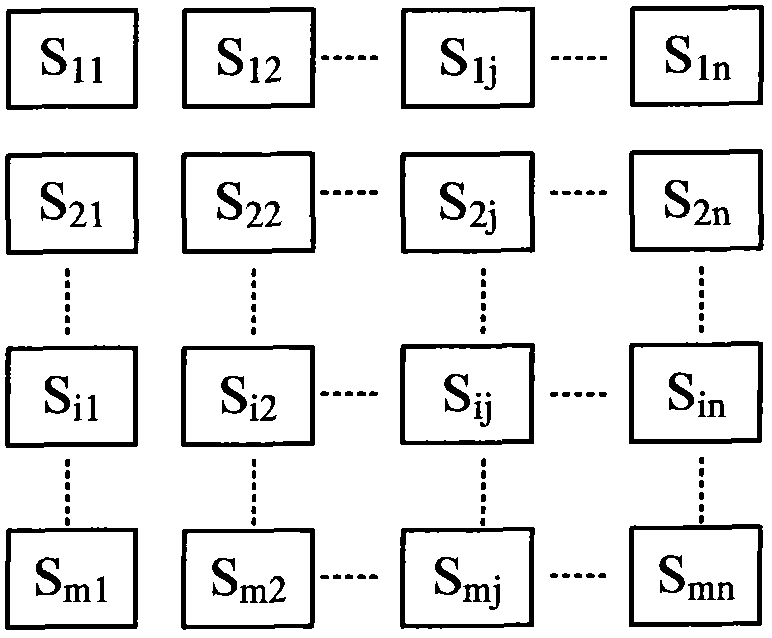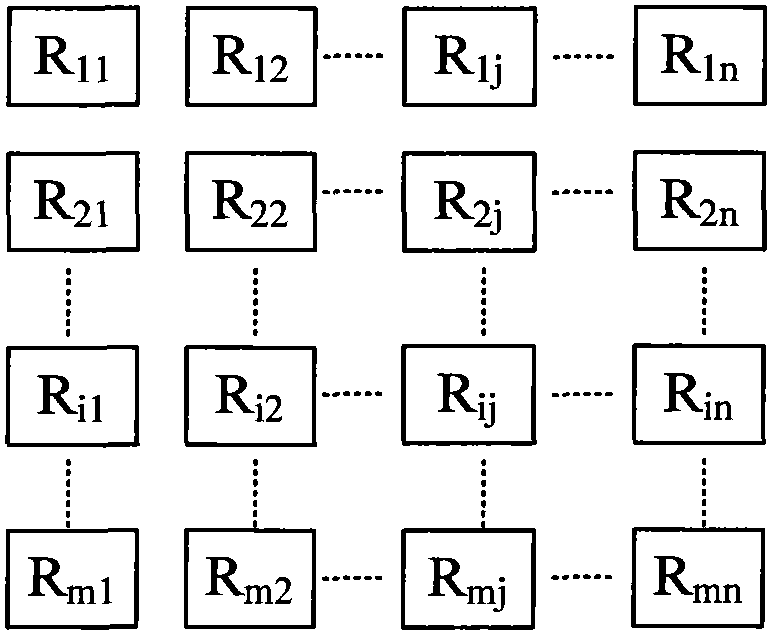Method and system for eliminating deformation noise in detection data of touch detection device
A technology for touch detection and data detection, which is applied in the field of deformation noise elimination methods and systems, and can solve problems such as different deformation degrees, interference, and inconsistency of deformation noise.
- Summary
- Abstract
- Description
- Claims
- Application Information
AI Technical Summary
Problems solved by technology
Method used
Image
Examples
Embodiment 1
[0067] Embodiment 1, step C can be decomposed into the following steps to achieve:
[0068] Step C11, for each group of touch detection nodes, subtract the detection data of every two adjacent touch detection nodes to obtain multiple sets of deformation difference components containing N-1 deformation difference components in each group; where N is each group of touch The number of touch detection nodes in the detection node.
[0069] by Figure 7 Taking the detection data shown as an example, the difference between the adjacent detection data in the 12th column is obtained to obtain 19 difference components, such as Figure 11 As shown, it can be seen that the difference value of the area touched by a finger changes greatly, and the deformation of the area without finger touch is small, that is, the influence of touch is greater than the influence of deformation. Make a difference for the adjacent detection data in the fifth column, and then take the difference value Absolu...
Embodiment 2
[0082] In the second embodiment, a grouping statistical algorithm is used for searching the touch area and the non-touch area. Since the number of sampling points in the touch area is smaller than the number of sampling points in the non-touch area, after the grouping is completed, the group with the largest number of sampling points in the group is used as the non-touch area, and the others are used as the touch area. The sampling value of the non-touch area is directly used as the deformation amount, and the deformation amount of the touch area is fitted by the value of the non-touch area. Such as Figure 11 As shown, since the area of the human finger is much smaller than the area of the touch screen, Figure 11 There are two fingers touching, the maximum value DiffMax=140, the minimum value DiffMin=0, if it is divided into 4 groups (that is, 4 levels, the progression reflects the number of degrees), then the step size is Step=(140-0) / 4=35, after grouping, the group ...
PUM
 Login to View More
Login to View More Abstract
Description
Claims
Application Information
 Login to View More
Login to View More - R&D
- Intellectual Property
- Life Sciences
- Materials
- Tech Scout
- Unparalleled Data Quality
- Higher Quality Content
- 60% Fewer Hallucinations
Browse by: Latest US Patents, China's latest patents, Technical Efficacy Thesaurus, Application Domain, Technology Topic, Popular Technical Reports.
© 2025 PatSnap. All rights reserved.Legal|Privacy policy|Modern Slavery Act Transparency Statement|Sitemap|About US| Contact US: help@patsnap.com



